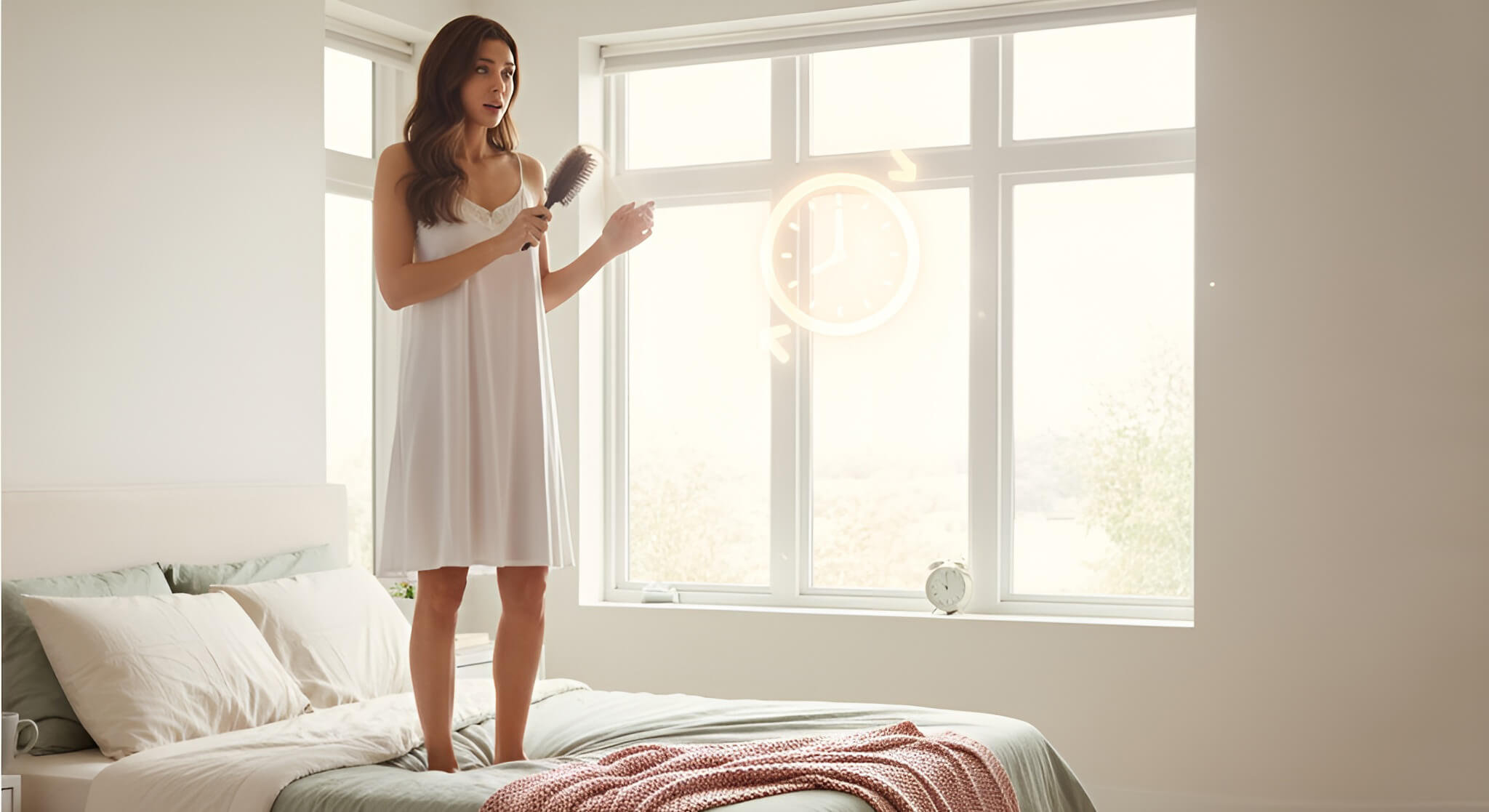Seeing More Hair in Your Brush? Daylight Savings Might Be the Surprising Culprit.
Table of contents
The “Clock Change Blues”: More Than Just a Darker Evening
You’ve noticed it, and it’s causing some anxiety: more hair seems to be shedding. You see it in your brush, on your pillow, and in the shower drain. You chalk it up to the time of year, what’s commonly known as “seasonal shedding.” But what if one specific event this season—the end of Daylight Saving Time—is acting as a powerful, hidden trigger for your hair loss?
The “fall back” clock change isn’t just about the time on your watch; it’s a jolt to our internal biological systems, one that can have a significant and surprising impact on our stress levels and, consequently, our hair health.
We’re exploring the fascinating scientific link between that one “extra” hour of sleep and what you’re seeing in your hairbrush.
The Science: How One “Lost” Hour of Light Can Stress Your Hair Follicles
The connection between the clock change and your hair is a cascade of biological responses.
The Circadian Rhythm Shock
Your body operates on a finely tuned, 24-hour internal clock called a circadian rhythm. This rhythm governs everything from your sleep-wake cycle to your hormone release. The abrupt, one-hour shift, even if it seems minor, disrupts this rhythm, creating a form of “social jet lag.” This disruption can temporarily decrease the quality of your deep sleep or even trigger a bout of insomnia as your body struggles to adapt to the new schedule.
The Cortisol Connection
This is the most critical part of the story. The disruption to your sleep and the general stress of this abrupt transition can cause an increase in the production of your body’s primary stress hormone, Cortisol. Chronically elevated Cortisol is a powerful signal to your hair follicles. It can prematurely push a larger-than-normal number of them from the active ‘growth’ phase (anagen) into the resting and shedding ‘shedding’ phase (telogen). This phenomenon is known as telogen effluvium. more info: https://www.ncbi.nlm.nih.gov/books/NBK430848/.
The “Double Whammy” Effect
The stress from the clock change occurs at the exact time of year when your body may already be primed for natural seasonal shedding. These two factors can combine and amplify each other, making the hair fall seem much more significant and alarming than it would otherwise be.
The Aftermath: Why You Notice It Weeks Later
It’s important to understand that the hair that has been pushed into the shedding phase by the stress of the clock change doesn’t fall out immediately. It remains in the telogen (resting) phase for about two to three months before it finally sheds.
This is why you might notice a significant increase in hair shedding in late autumn or early winter, long after you’ve forgotten about the clock change itself. You’re seeing the delayed effect of that initial stressor.
Your “Post-Clock Change” Hair Rescue Plan
You can’t stop the clocks from changing, but you can control how you support your body through the transition.
- Prioritize Morning Light Exposure: As soon as you wake up, expose yourself to bright, natural light. A short morning walk, even on an overcast day, is one of the fastest and most effective ways to help reset your internal clock and signal to your brain that it’s the start of the day.
- Support Your Sleep: In the weeks following the time change, be extra diligent with your night routine. Avoid screens an hour before bed, consider a calming magnesium supplement (with your doctor’s approval), and create a cool, dark, and quiet sleep environment to maximize your chances of getting restorative deep sleep.
This specific recommendation to consider a “calming magnesiumsupplement” is a key part of a proactivestress managementstrategy. It’s worth exploring a full review of popular anti-stress supplements and their effect on hair to see how ingredients like magnesium and Ashwagandha work. - Manage Your Stress Proactively: Combat the anxiety from shorter, darker days with active stress management techniques. This could include a few minutes of daily meditation, gentle yoga, or simple deep breathing exercises. These practices are proven to help lower Cortisol levels.
The Verdict: It’s a Trigger, Not a Destiny
So, does Daylight Saving Time directly cause your hair to fall out? No. But it is a significant physiological stressor that can absolutely trigger and amplify the natural seasonal shedding process.
You can’t control the time, but you can control how you support your body during this annual transition. By prioritizing sleep, managing stress, and getting morning light, you are actively investing in the health of your hair for the coming season. It’s a crucial step for hair strengthening and for your peace of mind.






